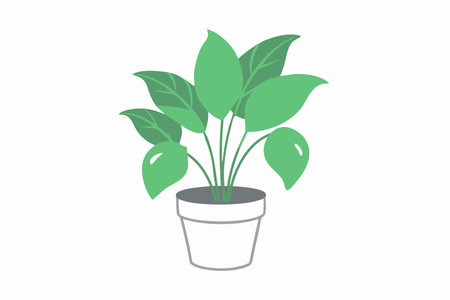1. Understanding the British Garden Setting
British gardens are more than just patches of green—they’re cherished spaces where generations bond, learn, and grow together. Whether it’s a quaint cottage garden in the Cotswolds or a suburban plot brimming with roses and runner beans, our gardens reflect our unique traditions and deep-rooted love for nature. The UK’s temperate climate brings generous rainfall, cool summers, and unpredictable weather, making it both a blessing and a challenge for plant health. From classic plants like hydrangeas, lavender, and boxwood to beloved apple trees and allotment veg, each species faces its own set of hurdles. Fungal diseases thrive in damp conditions, while milder winters can allow pests to linger longer than expected. Add to this our tradition of sharing cuttings with neighbours or tending to heritage shrubs handed down through families, and you’ll see how easily plant diseases can spread. For parents and children alike, learning about these challenges is not just a matter of gardening—it’s about nurturing curiosity, responsibility, and respect for the living world right outside our doors.
Spotting the Red Flags: Advanced Plant Diseases
As any seasoned British gardener knows, a bit of droop or a nibbled leaf is all part and parcel of tending to your patch. However, there are times when your plants send out more alarming signals—clear warnings that something more sinister is afoot. When advanced plant diseases take hold, they often announce their presence with symptoms that go far beyond the typical run-of-the-mill troubles. Recognising these red flags early can mean the difference between saving your prized blooms and losing them altogether.
Common Warning Signs in UK Gardens
| Symptom | Possible Disease | Where Its Commonly Seen |
|---|---|---|
| Black spots on leaves | Black spot fungus (Diplocarpon rosae) | Roses, especially in damp British summers |
| Unexplained dieback of stems or branches | Phytophthora root rot, canker diseases | Fruit trees, rhododendrons, camellias |
| Pale or yellowing foliage with wilting even after watering | Verticillium wilt, Fusarium wilt | Vegetables, maples, herbaceous perennials |
| Mottled patterns or rings on leaves | Viral infections (e.g., Tomato mosaic virus) | Tomatoes, cucumbers, potatoes |
The Importance of Timely Recognition
If you notice these symptoms cropping up despite your best efforts with home remedies like pruning and organic sprays, it may be time to admit that DIY solutions have met their match. While black spot on roses might start as a mere speckling, if left unchecked it quickly spreads—leaving bare stems where once there were glossy green leaves and vibrant flowers. Similarly, wilted leaves or sudden dieback aren’t just cosmetic issues; they’re often cries for help from roots under attack by soil-borne fungi or bacteria.
A Parents Perspective: Listening to Your Gardens Warnings
Think of your garden like a child who’s feeling poorly. A sniffle might be nothing, but a persistent cough or high fever tells you it’s time to seek professional advice. In much the same way, advanced plant diseases require more than just TLC—they demand timely intervention before the problem spreads throughout your cherished garden. Keeping an eye out for these red flags is not only wise but essential for keeping your British borders thriving.

3. DIY Approaches: What Works and Where Limitations Lie
There’s something wonderfully British about rolling up your sleeves and tackling a plant problem with classic home remedies. Many families here swear by soapy water to fend off aphids or use mulch from the compost heap to keep roots cosy and weeds at bay. These tried-and-true methods, passed down through generations—perhaps over a cup of tea in the garden shed—often become part of our weekend routine and a lovely way for children to get their hands dirty while learning about nature.
Simple DIY solutions do work wonders in early stages of disease or minor infestations. Soapy water can dislodge pests, while pruning away affected leaves or stems may stop trouble in its tracks. Mulch helps retain moisture, suppresses weeds, and can even deter some soil-borne nasties. Using these family-friendly approaches not only builds resilience in your plants but also nurtures curiosity and teamwork among young gardeners.
However, as any experienced allotment-holder will tell you, there are limits to what these gentle interventions can achieve—especially when plant diseases reach an advanced stage. Sometimes, no matter how lovingly you tend your vegetable patch or flower borders, the signs of deeper trouble persist: blackened stems that won’t green again, wilting that spreads from plant to plant, or odd growths that keep returning despite your best efforts.
Recognising when DIY has run its course is important for every gardener—young and old alike. When the garden’s usual remedies aren’t working, it’s a chance to have an honest conversation as a family: Should we seek expert advice? Is it time for professional intervention? Understanding these boundaries not only saves your cherished plants but also teaches little ones that sometimes asking for help is the bravest—and wisest—thing we can do.
4. When to Call in the Experts
Sometimes, no matter how lovingly we nurture our green companions, there comes a point when a plants troubles move beyond what we can manage at home. Understanding when to seek help is part of being a thoughtful plant parent—just as with our children, recognising when its time to consult someone with specialised knowledge can make all the difference. Here in the UK, we’re fortunate to have a supportive network of local experts who can step in when DIY efforts fall short.
Recognising the Signs: Is It Time for Professional Help?
If you notice persistent symptoms such as spreading leaf spots, wilting that doesn’t resolve with watering, unusual growths, or signs of rot that resist your usual remedies, it may be time to reach out. Sometimes disease can quickly advance despite your best efforts, especially in our unpredictable British weather!
Who Can You Turn To?
The UK offers a variety of resources for gardeners facing stubborn plant health issues. Knowing whom to approach—and what support they offer—can empower you and save your beloved plants. Here’s a handy table to guide your next steps:
| Expert/Resource | When to Contact | Support Available |
|---|---|---|
| Local Garden Centres | For advice on common diseases, product recommendations, or when seeking quick guidance | On-the-spot advice, diagnosis tips, recommended treatments |
| Horticulturists | For persistent or unusual symptoms unresponsive to standard care | Home visits, tailored treatment plans, prevention strategies |
| Plant Pathologists (e.g., via RHS) | If you suspect a serious or uncommon disease affecting multiple plants or species | Laboratory diagnosis, in-depth analysis, official reports |
Navigating Support in the UK
The Royal Horticultural Society (RHS) is a wonderful source for both amateur and experienced gardeners; members have access to expert diagnosis services. Many local councils also offer guidance on pest and disease management for public spaces and private gardens alike. Don’t hesitate to ask neighbours or gardening clubs for recommendations—they’re often fountains of wisdom born from experience under British skies!
Reaching out isn’t admitting defeat—it’s ensuring your garden family thrives. By knowing when and where to seek professional help, you’re giving your plants every chance to recover and flourish once more.
5. Learning from Nature and Passing On Wisdom
When our beloved garden plants show signs of advanced disease, it’s easy to feel discouraged—especially after all the DIY remedies have been tried and tested. Yet, these challenging moments offer a rich opportunity for families to come together, learn from nature, and nurture important life skills in children.
Observation: The First Step in Understanding
Children are naturally curious. By inviting them to closely examine wilting leaves or spot unusual markings, parents can encourage their little ones to ask questions like “Why do you think this plant looks poorly?” or “What could have caused these spots?” This simple act of observing and discussing helps develop keen eyes and critical thinking, both in the garden and beyond.
Resilience Through Shared Challenges
Not every garden story has a happy ending—and that’s okay. When plants don’t recover despite best efforts, it’s an opportunity to talk with children about resilience. Together, you can reflect on what was learned, what might be tried next time, and how setbacks are a natural part of growing anything—from sunflowers to new skills.
Passing Down Practical Knowledge
The UK’s rich gardening tradition is built on generations sharing their experiences. By involving children in diagnosing plant problems and making decisions—such as when it’s time to call in a local horticultural expert—parents pass down both wisdom and confidence. These hands-on lessons prepare young gardeners for future challenges, whether that’s caring for their own allotment or simply appreciating the wonders of the natural world.
Ultimately, recognising advanced plant disease isn’t just about saving this year’s tomatoes; it’s about fostering curiosity, resilience, and a lifelong love for learning together in the British garden.


